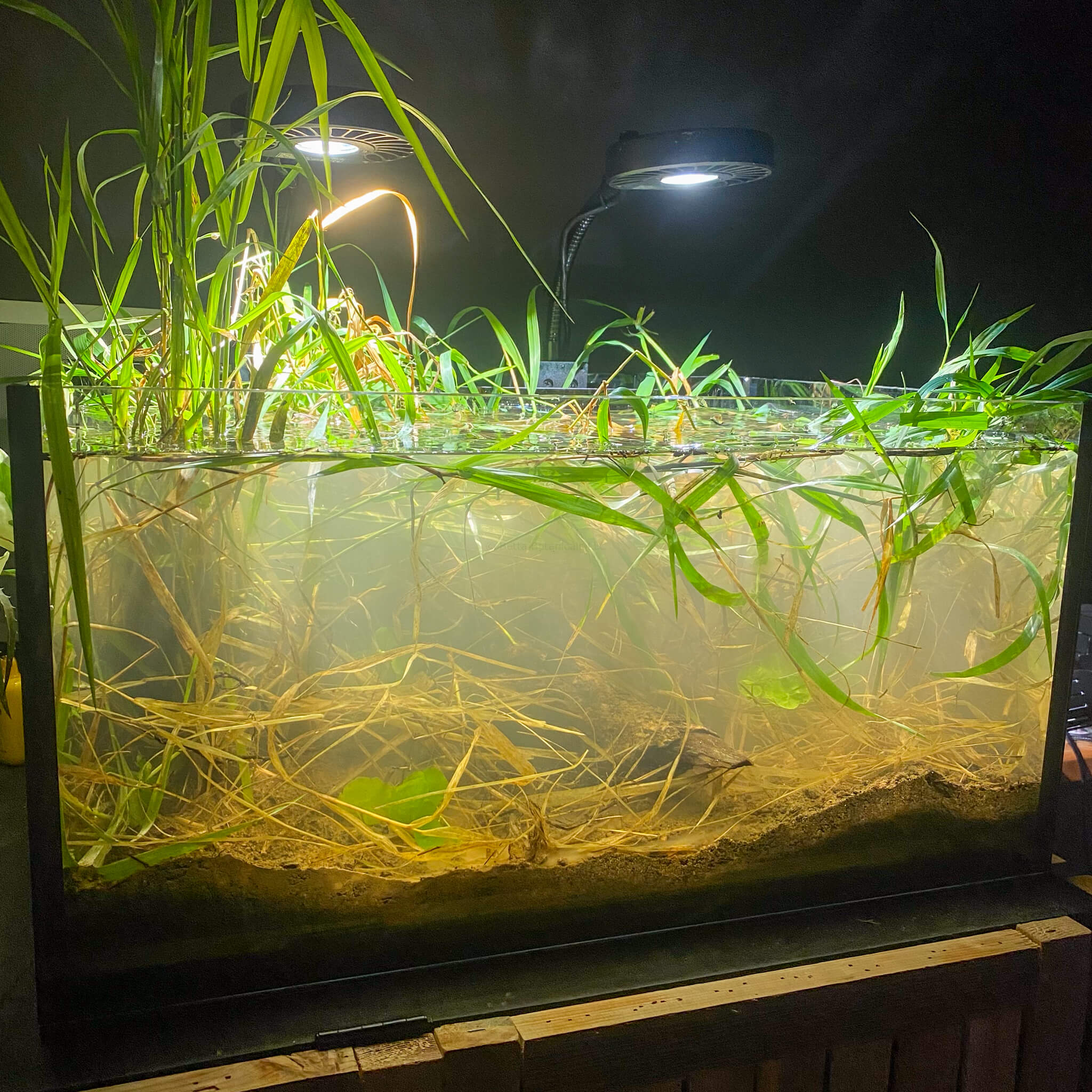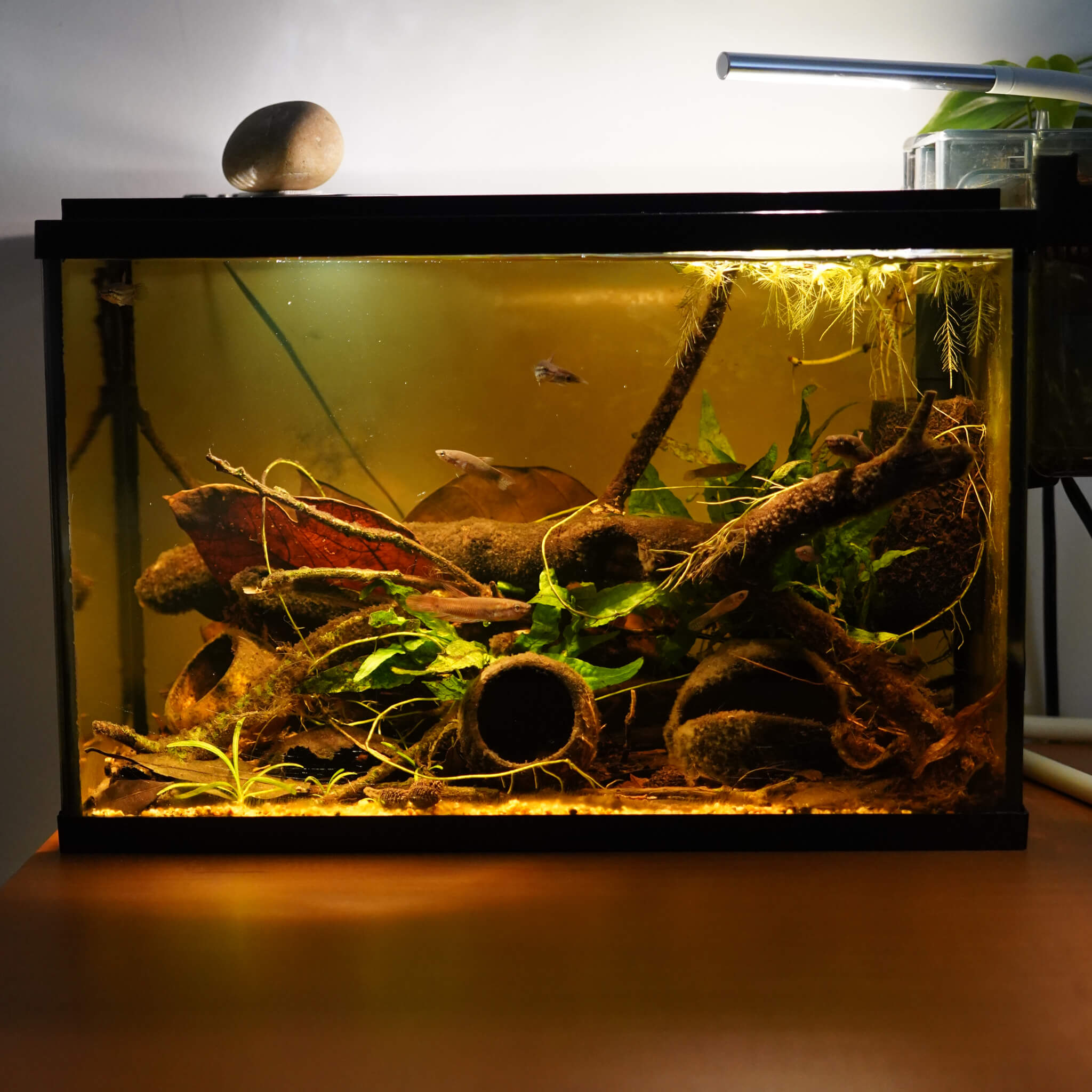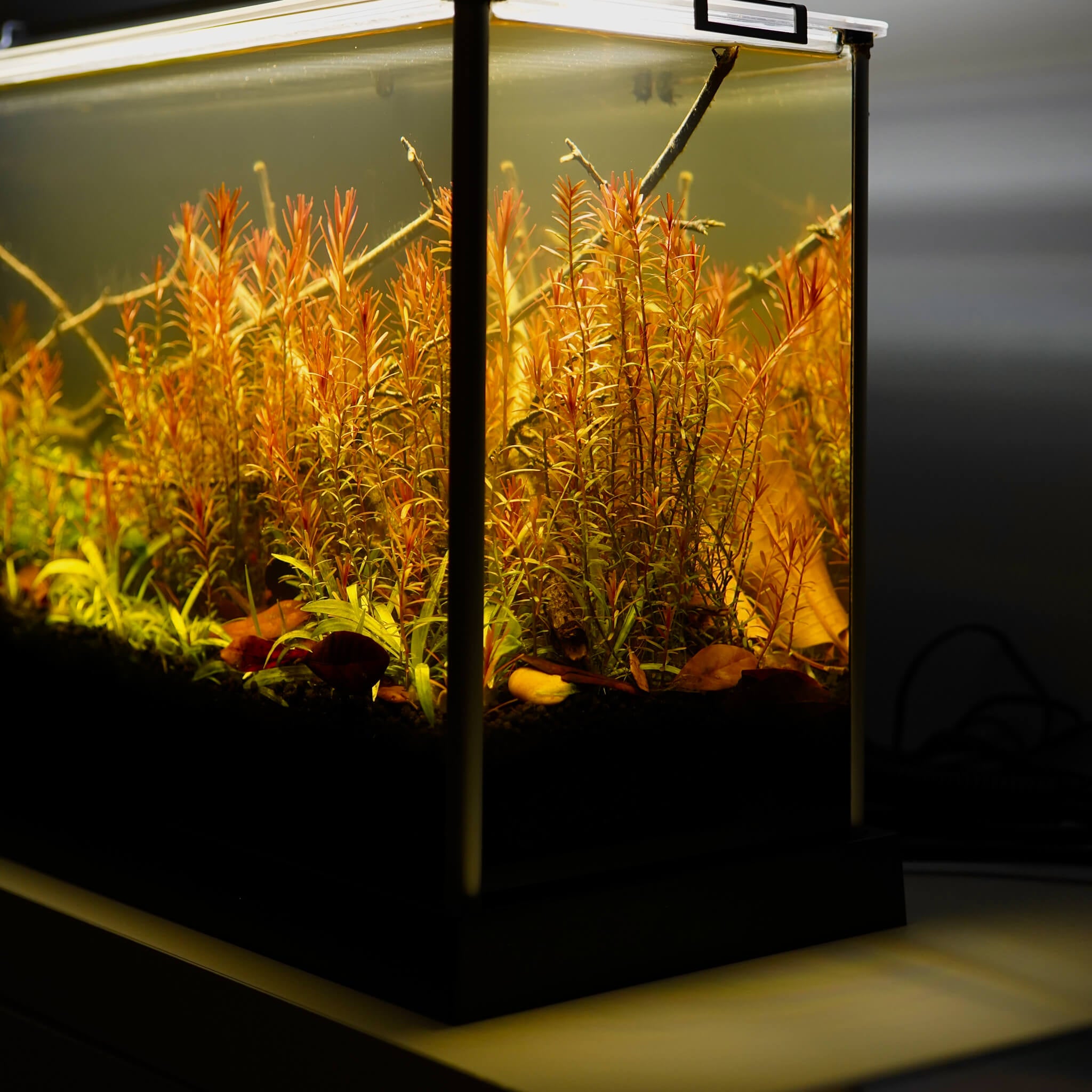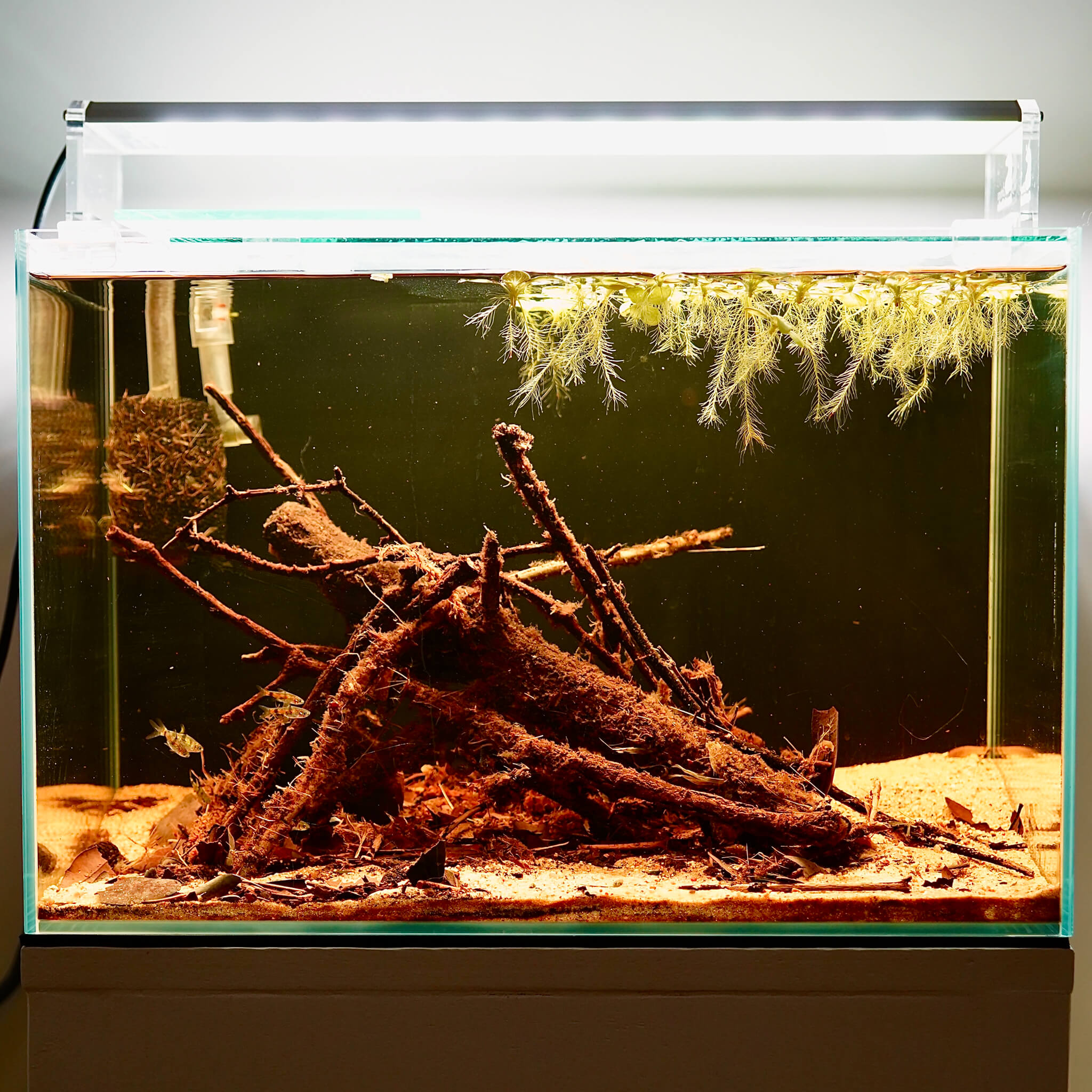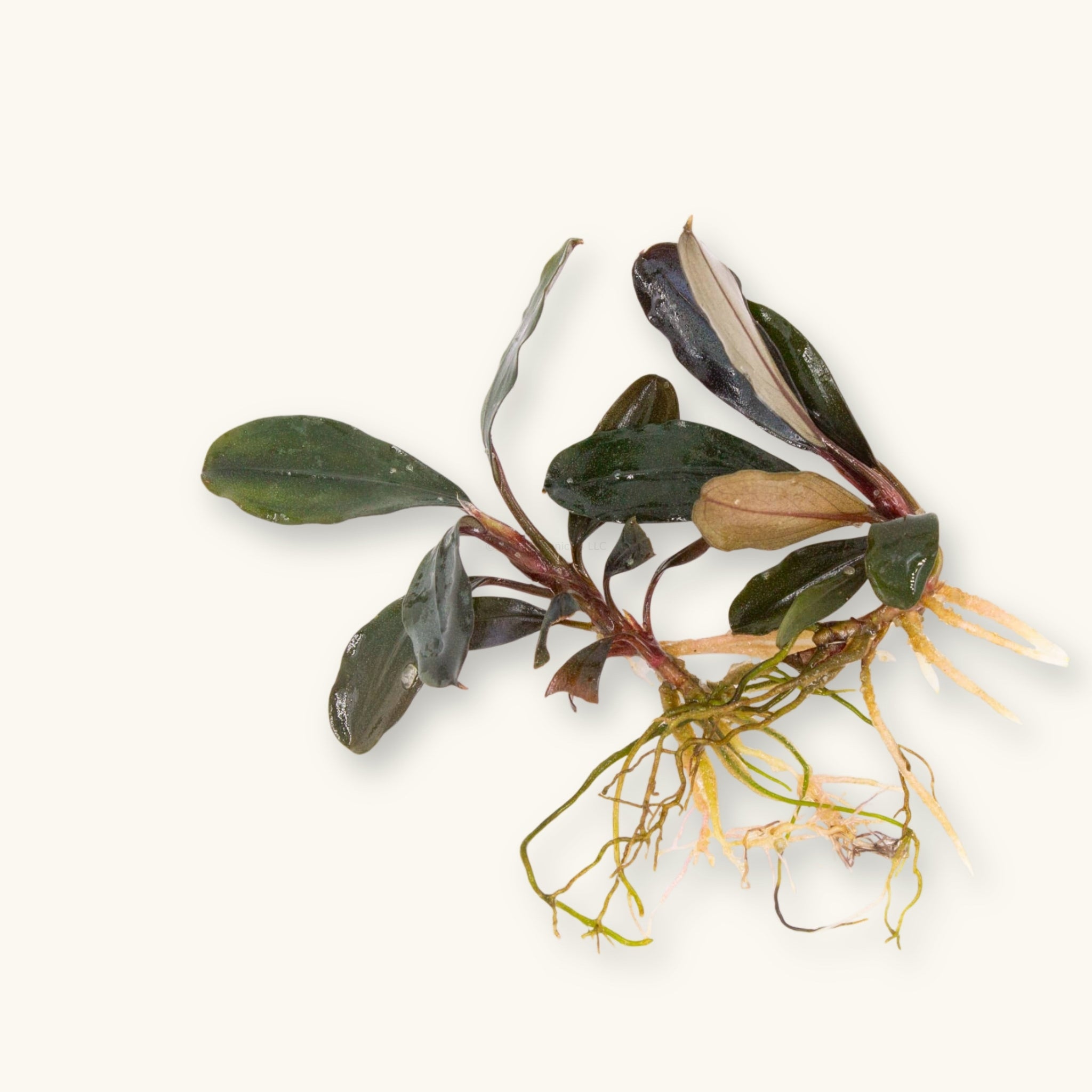
Bucephalandra Red Central
Bucephalandra Red Central
Common Name: Buce Red Central
Bucephalandra Red Central is a rhizome-based plant known for its deep crimson undertones and glossy leaf surface, which can intensify as the plant converts to submerged growth. Like other Buce, this variety should be affixed to driftwood, rock, or seed pods like Sapucaia King Pods for best results, but never bury the rhizome directly in the substrate.
This variety thrives in blackwater, biotope, and botanical method aquariums where stability encourages its gradual transformation from emersed to submerged growth. As it adapts, new leaves develop deeper pigmentation and a subtle iridescence, especially when provided full-spectrum light and a broad-spectrum fertilizer. Its coloration and compact size make it ideal in shrimp tanks and Southeast Asian biotope aquariums.
To propagate, simply trim the rhizome into segments with 3–5 healthy leaves and reattach them elsewhere in the tank. Like all our Buces, Buce Red Central is sustainably grown in controlled environments—not collected from the wild—supporting habitat-conscious aquarium practices.
Caring for Bucephalandra Red Central in Blackwater Aquariums
Each piece is selected at random
Sold As: Individual Plant
Care Level: Easy
Lighting Requirement: Low to Medium
CO2: Not Required but Helpful
Growth Rate: Slow
Native Habitat: Borneo
Tint Tolerance: Low to High
Tank Placement: Foreground – Mid-ground
All plants may contain snails or snail eggs. We keep them in all of our tanks for the benefits they provide. Our blackwater aquarium plants are provided by H2OPlants in adherence to their Shipping and DOA Policies. Your curated selection will arrive in their packaging separate from your botanical & merch orders.

Bucephalandra Red Central
contrast the tint with greenery
While the aesthetic appeal of tinted waters can be quite attractive to us, the recreation of nature—which includes both submerged and emersed plants—is the end goal. Flora helps to improve water conditions, feeding patterns, spawning displays, and territory building.
Aquatic Plant FAQs
DOA Policy
Please ensure that you add a heat pack or cold pack to your orders if temperatures in your area are above 90°F or below 40°F. Click for more info on our DOA Policy.
Are these plants duckweed and snail free?
All Plants may contain snails or snail eggs, small macroinvertebrates, and duckweed. We keep them in all of our tanks for the benefits they provide. We have experienced the presence of small snails, ostracods, daphnia, and beneficial detritus worms.
Are your plants only for tinted water conditions?
Nope! All of our plants will grow perfectly in untinted aquariums that have CO2 and aquasoils, or low-tech planted aquariums. Our selection, though, is optimized for emersed plant growth and low- to medium-tinted water environments.
What is your aquatic plant shipping schedule?
We’re a small company and ship Tuesdays & Thursdays only. Orders placed Wednesday–Sunday → Ship Tuesday. Orders placed Monday–Tuesday → Ship Thursday
Are your plants just for bettas?
Nope. Our aquatic plants are safe for almost all aquariums, terrariums, vivariums, and paludariums. Many of our plants can be grown emersed in filter compartments, vivariums, or incorporated into wabikua.
What are Tannins?
Tannins are natural compounds released by leaves, seed pods, and bark as they decompose in water. They soften water, gently lower pH, and create the characteristic tea-stained tint found in blackwater habitats. But their role goes far beyond color—tannins fuel beneficial bacteria, fungi, and biofilms, which form the foundation of a healthy ecosystem. They also offer mild antifungal benefits and help reduce stress in fish by replicating the natural conditions they’ve evolved in. At their core, tannins are plant-derived antioxidants that connect your aquarium to the same processes at work in wild flooded forests and streams.




